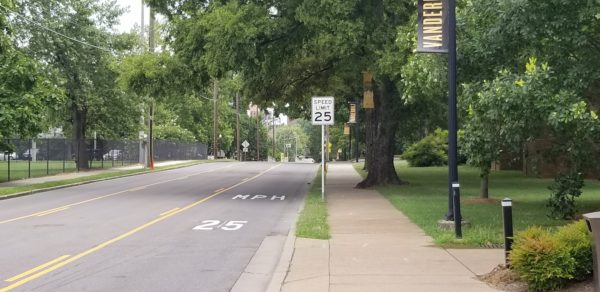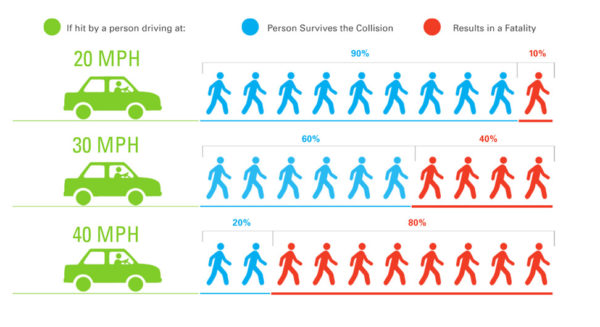Velocity limits lowered throughout campus to reinforce pedestrian security | Vanderbilt Information
[ad_1]

Velocity limits throughout Vanderbilt’s campus have been lowered as a part of the college’s ongoing dedication to pedestrian security. Signage illustrating the up to date velocity limits was put in in early July, and the up to date limits had been painted on the pavement of every of the affected roadways.
In alignment with FutureVU’s initiative to create a extra numerous, inclusive, accessible and sustainable surroundings for the campus group, the college is dedicated to creating secure, pedestrian-friendly areas that promote connectivity and group enhancement whereas preserving the college’s park-like setting.
Following research by VUPS on morning, mid-afternoon and night rush hour visitors cycles, it was decided the decrease and safer velocity limits wouldn’t negatively influence commuter visitors whereas dramatically enhancing security for pedestrians and cyclists.
The brand new velocity limits are as follows:
| Avenue | Earlier than | After |
| 25th Avenue South | 30 MPH | 25 MPH |
| Natchez Hint | 30 MPH | 25 MPH |
| Vanderbilt Place | 30 MPH | 25 MPH |
| Jess Neely Drive | 30 MPH | 20 MPH |
| Highland Avenue | 30 MPH | 20 MPH |
| 24th Avenue South | 30 MPH | 20 MPH |
“We all know that by merely decreasing a velocity restrict by 5 or 10 miles per hour, we’re considerably rising the security and well-being of pedestrians,” stated Maj. Corwin Thomas of the VUPD. “9 out of 10 pedestrians survive when hit by a automobile at 20 miles per hour versus solely a 60 % survival charge at 30 miles per hour. Decreasing the boundaries saves lives and encourages our group to stroll or bike when potential as a substitute of driving.”

The efforts, undertaken together with the Metropolitan Nashville authorities and MoveVU, Vanderbilt’s mobility and transportation technique beneath FutureVU, will enhance security and accessibility on and round campus.
“Making certain that we encourage secure and equitable mobility choices for our campus group and our surrounding neighbors is crucial,” stated Erin Hafkenschiel, government director for mobility at Vanderbilt. “We should stay dedicated to creating and constructing a campus that’s pedestrian-centric.”
Along with the decrease velocity limits, initiatives applied on and round campus to enhance secure and accessible alternatives for pedestrians, scooters and cyclists embody:
- A collaboration with Nashville Electrical Service to establish and map poorly lighted streetlight poles and cease lamp poles all through campus, leading to a complete of 59 streetlights repaired or changed because the mapping challenge started.
- Upgrading almost 40 intersection visitors gentle methods to incorporate audible alerts for the visually impaired.
- Growing a scooter security course protecting primary security guidelines, primary driving expertise, state and metropolis legal guidelines and laws, and driving drills inside a car parking zone to reenforce driving strategies. Lessons can be supplied this tutorial 12 months.
- Monitoring numerous crosswalks for restore wants and upgrading avenue markings, lighting, indicators and ADA ramps and trunnion cone pads.
- Launching a pilot program to check pedestrian refuge areas (islands) on 25th Avenue. The areas are extremely seen pedestrian refuges at uncontrolled crosswalks, the place a racetrack sample of versatile bollard poles occupies the middle lane and a cut-through of the bollards creates the crosswalk.
- A collaboration with the League of American Bicyclists to coach their bicycle patrol officers to instruct their standardized course with further data for the Vanderbilt space.
- Making a “good biking class” by VUPS, wherein police bicycle officers use their coaching to provide campus cyclists larger confidence and delight when driving. The category can be supplied this tutorial 12 months.
For extra data, go to the FutureVU web site or the VUPS web site.
[ad_2]
Supply hyperlink